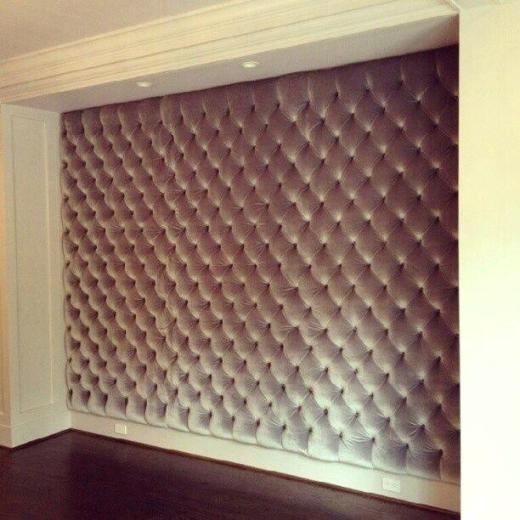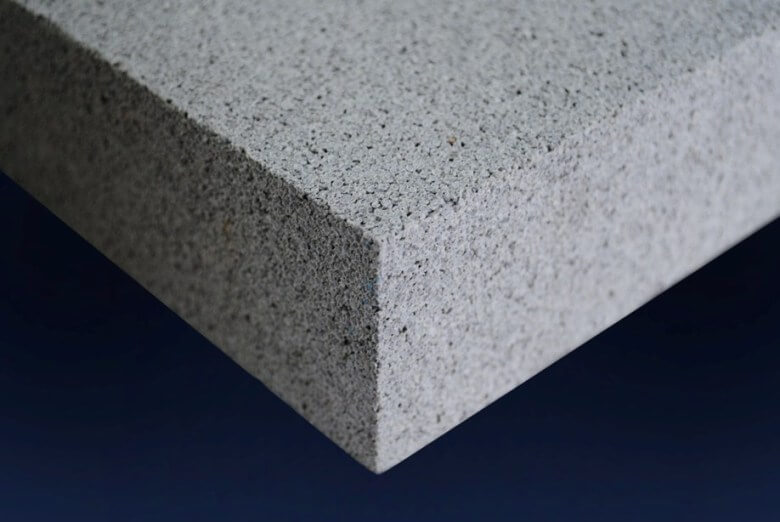Attending the principle of cause and effect, few are aware of the need to soundproof a wall until their neighbors decide to share with them the TV programming every night, the conversations (always friendly) of a couple or any other of their activities. Others, however, in an altruistic outburst, intend to promote well-being among their peers by reducing the transmission of noise that they may emit, but do not seek to see a few of them. Be as it will be and for the benefit of both ends, this time we will talk about how to soundproof a wall.
Factors to consider before soundproofing a wall
Currently, in the market we can find more than a wide variety of products focused on acoustic insulation, although it is true that many of them are simply intended for such uses without the need to be specific. Therefore, more than concrete materials we should talk about acoustic construction systems, some of them tested in the laboratory to check the levels of efficiency.
For the choice of a specific acoustic construction system, it must be taken into account that each material offers a different response to each frequency, using soft materials to attenuate medium/severe range frequencies and high density materials for high frequencies, considering also the transmission of structural noise and impact, looking for a solution together through the following acoustic system.
Acoustic insulation advice for our walls
The walls and windows can be covered with very thick fabrics that absorb vibrations and prevent the transmission of noise. In addition to decorating, they have acoustic soundproofing properties and in summer reduce heat by providing effective thermal insulation.
Also the curtains and the tapestries of consistent fabrics like velvet, very thick linen, corduroy… help to absorb the sound waves.
If the noises of the neighbors are unbearable, we live in an area too noisy and noises are filtered in our home or if we play musical instruments and do not want to disturb, there is no cheaper way to mitigate the noise than shelving our walls. The more books you have, the more sound will be damped. It is also very useful to place cabinets, furniture from wall to wall, fill them with mirrors or panels that act as an acoustic barrier.
The shelves loaded with books are a very decorative and simple solution to avoid the sounds of appliances, elevators and reduce vibrations in the adjoining room. A bookshelf full of books can act as a diffuser and therefore have acoustic absorbent qualities. By varying the arrangement and placement of books, different acoustic conditioning can be obtained in each case. Alternates books of different sizes and leaves different spaces between them. The greater the disorder, the different size and thickness of the books, the better variety of configurations you can make.
Another novelty that we propose and very used lately is the painting that soundproof. It consists of a type of coating that creates a film on the wall that provides a layer of sound insulation in the rooms. They work as thermal and acoustic insulation.
Like many other advances that are already used on a daily basis, acoustic insulating paint was created using technologies from NASA (The National Aeronautics and Space Administration). It is based on latex and water, and contains microspheres, resin and filters that create a membrane capable of absorbing sound and reducing it by 30%.
Acoustically isolating the walls of the house with paint is simple, because it is enough to take the roller and paint it on the walls, it is effective even using it on existing paint. In addition, the acoustic paint does not have a bad smell; it dries quickly and cleans easily.
Another resource that is widely used and economical is to cover with panels the wall from which the noise comes. Rubber foam or plates like friezes work very well.
You can also buy plasterboard acoustic panels for easy installation and launch to install them, there are many videos explaining how to do it. They can be covered with fabrics or wallpaper and the decoration does not suffer.
The plasterboard can be of different densities and thicknesses, although the higher the density, the greater the acoustic insulation. If we decide on this option we must bear in mind that walls and shelves of plasterboard can reduce the space of our room. Pladur panels support a certain weight, usually not more than 15 kg. This must be taken into account when placing decorative elements on them such as paintings, mirrors, shelves…
A little more elaborate and laborious, but very effective, is to cover the wall with an insulating material (wool fiber, cork …) which can then be hidden with drywall. Solid wood or chipboard panels can also be useful insulators.
Other acoustic insulation tips for home walls
- Use of sheets and blankets, we all have old sheets and blankets abandoned in a hole in the closet at home. Place them on the wall and use them as an acoustic absorbent material, if you made imagination you can even get an original decoration while acoustically isolating them. The thicker and more porous the fabric absorbs and if you leave a space between the fabric and the wall, the insulation will be more effective.
- Use of egg boxes: They are a widely known resource. They do not sound effectively, but they do something and contribute little to acoustically isolating your home. As a solution in itself it is not highly effective but something helps. They are non-insulating sound absorbers.
- Avoid corners: The corners between walls act as amplifiers of sound. Any sound that goes to the corner bounces more intensely. We can eliminate the amplifying effect of the corners with a cardboard and adhesive tape that provides a more rounded surface.
Keys in the use of materials for effective acoustic insulation of walls
With rock wool, cellulose or fiber, among other materials you have the possibility to acoustically isolate each of the environments. We recommend the benefits of insufflated insulation, as an efficient noise controls system, because it acts as a protection against external sounds and is an excellent acoustic barrier.
Respecting the environment with materials such as fiberglass, you will improve the performance of the elements you install inside your home. All this is due to an ideal composition of the rock wool or glass that isolates correctly with the insufflation system and achieves these results:
- Greater correction of noise.
- Reduction of aerial and structural sounds.
- Elimination of noise that comes from outside to inside areas and reproduced in the interior.
To sound a wall the first thing is to be clear of where the noise is coming from, that is, the cause that generates it.
Noises can be airborne, such as music, voices … etc, and also of impact such as those produced by the collision of objects, footprints… and structural noise transmitted through the structure of the building. If we suffer noises of one kind or another we will see the need to soundproof the walls of our house among others.

